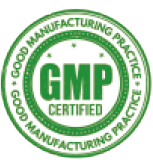S-Adenosyl methionine (SAM-e) is a common cosubstrate involved in methyl group transfers, transsulfuration, and aminopropylation. Although these anabolic reactions occur throughout the body, most SAM-e is produced and consumed in the liver.[1] More than 40 methyl transfers from SAM-e are known, to various substrates such as nucleic acids, proteins, lipids and secondary metabolites. It is made from adenosine triphosphate (ATP) and methionine by methionine adenosyltransferase. SAM-e was first discovered by Giulio Cantoni in 1952.[1]
In bacteria, SAM-e is bound by the SAM riboswitch, which regulates genes involved in methionine or cysteine biosynthesis. In eukaryotic cells, SAM-e serves as a regulator of a variety of processes including DNA, tRNA, and rRNA methylation; immune response;[2] amino acid metabolism; transsulfuration; and more. In plants, SAM-e is crucial to the biosynthesis of ethylene, an important plant hormone and signaling molecule.[3] Chemically, it is a sulfonium betaine which serves as a source of electrophilic methyl group or as a source of 5'-deoxyadenosyl radical.
SAM-e cycle
The reactions that produce, consume, and regenerate SAM-e are called the SAM-e cycle. In the first step of this cycle, the SAM-dependent methylases (EC 2.1.1) that use SAM-e as a substrate produce S-adenosyl homocysteine as a product.[4] S-Adenosyl homocysteine is a strong negative regulator of nearly all SAM-dependent methylases despite their biological diversity. This is hydrolysed to homocysteine and adenosine by S-adenosylhomocysteine hydrolase EC 3.3.1.1 and the homocysteine recycled back to methionine through transfer of a methyl group from 5-methyltetrahydrofolate, by one of the two classes of methionine synthases (i.e. cobalamin-dependent (EC 2.1.1.13) or cobalamin-independent (EC 2.1.1.14)). This methionine can then be converted back to SAM-e, completing the cycle.[5] In the rate-limiting step of the SAM cycle, MTHFR (methylenetetrahydrofolate reductase) irreversibly reduces 5,10-methylenetetrahydrofolate to 5-methyltetrahydrofolate.[6]
Radical SAM-e enzymes
A large number of iron-sulfur cluster-containing enzymes cleave SAM-e reductively to produce a 5′-deoxyadenosyl 5′-radical as an intermediate, and are called radical SAM enzymes.[7] Most enzymes with this capability share a region of sequence homology that includes the motif CxxxCxxC or a close variant. The radical intermediate allows enzymes to perform a wide variety of unusual chemical reactions. Examples of radical SAM enzymes include spore photoproduct lyase, activases of pyruvate formate lyase and anaerobic sulfatases, lysine 2,3-aminomutase, and various enzymes of cofactor biosynthesis, peptide modification, metalloprotein cluster formation, tRNA modification, lipid metabolism, etc. Some radical SAM-e enzymes use a second SAM-e as a methyl donor. Radical SAM enzymes are much more abundant in anaerobic bacteria than in aerobic organisms. They can be found in all domains of life and are largely unexplored. A recent bioinformatics study concluded that this family of enzymes includes at least 114,000 sequences including 65 unique reactions.[8]
Polyamine biosynthesis
Another major role of SAM-e is in polyamine biosynthesis. Here, SAM-e is decarboxylated by adenosylmethionine decarboxylase (EC 4.1.1.50) to form S-adenosylmethioninamine. This compound then donates its n-propylamine group in the biosynthesis of polyamines such as spermidine and spermine from putrescine.[9] SAM-e is required for cellular growth and repair. It is also involved in the biosynthesis of several hormones and neurotransmitters that affect mood, such as epinephrine. Methyltransferases are also responsible for the addition of methyl groups to the 2′ hydroxyls of the first and second nucleotides next to the 5′ cap in messenger RNA.[10][11]
Pharmacokinetics
Oral SAM achieves peak plasma concentrations three to five hours after ingestion of an enteric-coated tablet (400–1000 mg). The half-life is about 100 minutes.[17]
Adverse effects
SAM-e has recently been shown to play a role in epigenetic regulation. DNA methylation is a key regulator in epigenetic modification during mammalian cell development and differentiation. In mouse models, excess levels of SAM-e have been implicated in erroneous methylation patterns associated with diabetic neuropathy. SAM-e serves as the methyl donor in cytosine methylation, which is a key epigenetic regulatory process.[19] Because of this impact on epigenetic regulation, SAM-e has been tested as an anti-cancer treatment. Cancer cell proliferation is dependent on having low levels of DNA methylation. In vitro addition has been shown to remethylate promoter sequences and decrease the production of proto-oncogenes.[20]
References
- ^Jump up to:abCantoni, GL (1952). "The Nature of the Active Methyl Donor Formed Enzymatically fromL-Methionine and Adenosinetriphosphate".J Am Chem Soc.74(11): 2942–3.doi:10.1021/ja01131a519.
- ^Ding, Wei; Smulan, Lorissa J.; Hou, Nicole S.; Taubert, Stefan; Watts, Jennifer L.; Walker, Amy K. (2015-10-06)."S-Adenosylmethionine Levels Govern Innate Immunity through Distinct Methylation-Dependent Pathways".Cell Metabolism.22(4): 633–645.doi:10.1016/j.cmet.2015.07.013.PMC4598287.PMID26321661.
- ^Wang, X.; Oh, M. W.; Komatsu, S. (2016-06-01). "Characterization ofS-adenosylmethionine synthetases in soybean under flooding and drought stresses".Biologia Plantarum.60(2): 269–278.doi:10.1007/s10535-016-0586-6.ISSN0006-3134.S2CID15567646.
- ^Finkelstein J, Martin J (2000). "Homocysteine".Int J Biochem Cell Biol.32(4): 385–9.doi:10.1016/S1357-2725(99)00138-7.PMID10762063.
- ^Födinger M, Hörl W, Sunder-Plassmann G (Jan–Feb 2000). "Molecular biology of 5,10-methylenetetrahydrofolate reductase".J Nephrol.13(1): 20–33.PMID10720211.
- ^Goyette, P.; Sumner, J. S.; Milos, R.; Duncan, A. M.; Rosenblatt, D. S.; Matthews, R. G.; Rozen, R. (1994-06-01). "Human methylenetetrahydrofolate reductase: isolation of cDNA, mapping and mutation identification".Nature Genetics.7(2): 195–200.doi:10.1038/ng0694-195.ISSN1061-4036.PMID7920641.S2CID23877329.
- ^Booker, SJ; Grove, TL (2010)."Mechanistic and functional versatility of radical SAM enzymes".F1000 Biology Reports.2: 52.doi:10.3410/B2-52.PMC2996862.PMID21152342.
- ^Jump up to:abLandgraf, Bradley J.; McCarthy, Erin L.; Booker, Squire J. (2016-06-13). "RadicalS-Adenosylmethionine Enzymes in Human Health and Disease".Annual Review of Biochemistry.85: 485–514.doi:10.1146/annurev-biochem-060713-035504.PMID27145839.
- ^Roje S (2006). "S-Adenosyl-L-methionine: beyond the universal methyl group donor".Phytochemistry.67(15): 1686–98.doi:10.1016/j.phytochem.2006.04.019.PMID16766004.
- ^Loenen W (2006). "S-Adenosylmethionine: jack of all trades and master of everything?".Biochem Soc Trans.34(Pt 2): 330–3.doi:10.1042/BST20060330.PMID16545107.
- ^Chiang P, Gordon R, Tal J, Zeng G, Doctor B, Pardhasaradhi K, McCann P (1996). "S-Adenosylmethionine and methylation".FASEB J.10(4): 471–80.doi:10.1096/fasebj.10.4.8647346.PMID8647346.
- ^Rutjes, AW; Nüesch, E; Reichenbach, S; Jüni, P (7 October 2009)."S-Adenosylmethionine for osteoarthritis of the knee or hip"(PDF).The Cochrane Database of Systematic Reviews(4): CD007321.doi:10.1002/14651858.CD007321.pub2.PMC7061276.PMID19821403.
- ^Galizia, I; Oldani, L; Macritchie, K; Amari, E; Dougall, D; Jones, TN; Lam, RW; Massei, GJ; Yatham, LN; Young, AH (10 October 2016)."S-Adenosyl methionine (SAMe) for depression in adults".The Cochrane Database of Systematic Reviews.10: CD011286.doi:10.1002/14651858.CD011286.pub2.PMC6457972.PMID27727432.
- ^Mato, Jose M (1997). "S-adenosylmethionine synthesis: Molecular mechanisms and clinical implications".Pharmacology & Therapeutics.73(3): 265–280.doi:10.1016/s0163-7258(96)00197-0.hdl:10261/79246.PMID9175157.
- ^Anstee, QM; Day, CP (November 2012)."S-Adenosylmethionine (SAMe) therapy in liver disease: a review of current evidence and clinical utility".Journal of Hepatology.57(5): 1097–109.doi:10.1016/j.jhep.2012.04.041.PMID22659519.
- ^Jump up to:abLu, SC; Mato, JM (October 2012)."S-Adenosylmethionine in liver health, injury, and cancer".Physiological Reviews.92(4): 1515–42.doi:10.1152/physrev.00047.2011.PMC3698976.PMID23073625.
- ^Jump up to:abNajm WI, Reinsch S, Hoehler F, Tobis JS, Harvey PW (February 2004)."S-Adenosyl methionine (SAMe) versus celecoxib for the treatment of osteoarthritis symptoms: A double-blind cross-over trial. ISRCTN36233495".BMC Musculoskelet Disord.5: 6.doi:10.1186/1471-2474-5-6.PMC387830.PMID15102339.
- ^Rydberg B, Lindahl T (1982)."Nonenzymatic methylation of DNA by the intracellular methyl group donorS-adenosyl-L-methionine is a potentially mutagenic reaction".EMBO J.1(2): 211–6.doi:10.1002/j.1460-2075.1982.tb01149.x.PMC553022.PMID7188181.
- ^Varela-Rey, Marta (2014)."S-Adenosylmethionine Levels Regulate the Schwann Cell DNA Methylome".Neuron.81(5): 1024–1039.doi:10.1016/j.neuron.2014.01.037.PMC3960855.PMID24607226.
- ^Schmidt, Thomas; Leha, Andreas; Salinas-Riester, Gabriela (2016-12-31). "Treatment of prostate cancer cells withS-adenosylmethionine leads to genome-wide alterations in transcription profiles".Gene.595(2): 161–167.doi:10.1016/j.gene.2016.09.032.PMID27688072.
- ^"S-Adenosyl-L-Methionine (SAMe): In Depth". NCCIH. January 11, 2017.
- ^Woolston, Chris."What is SAM-e?"1 January 2019. Retrieved on 14 November 2019.
- ^Jump up to:abBottiglieri, T (November 2002)."S-Adenosyl-L-methionine (SAMe): from the bench to the bedside--molecular basis of a pleiotrophic molecule".The American Journal of Clinical Nutrition.76(5): 1151S–1157S.doi:10.1093/ajcn/76.5.1151S.PMID12418493.













